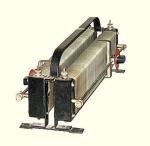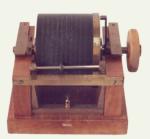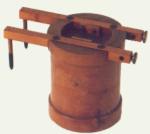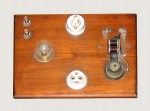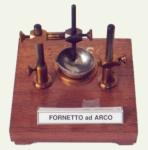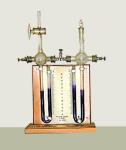Description
Two spirals of niccolite, one with a resistance twice as the other, are stretched on
the two balloons, each one of which communicating with a tube. After opening the upper keys,
we pour a coloured liquid into the manometer, and then we close the keys. We send the current
into the two spirals connected in series and we observe a different shift in the two
manometers. The middle binding post allows using the two spirals separately to demonstrate
that the quantity of developed heat is directly proportional to the square of the current
intensity for the same conductor.
For the two experiences a tension of 4 volt is enough, with a rheostat in series to
regulate the current intensity.
|


 Menu
Menu
